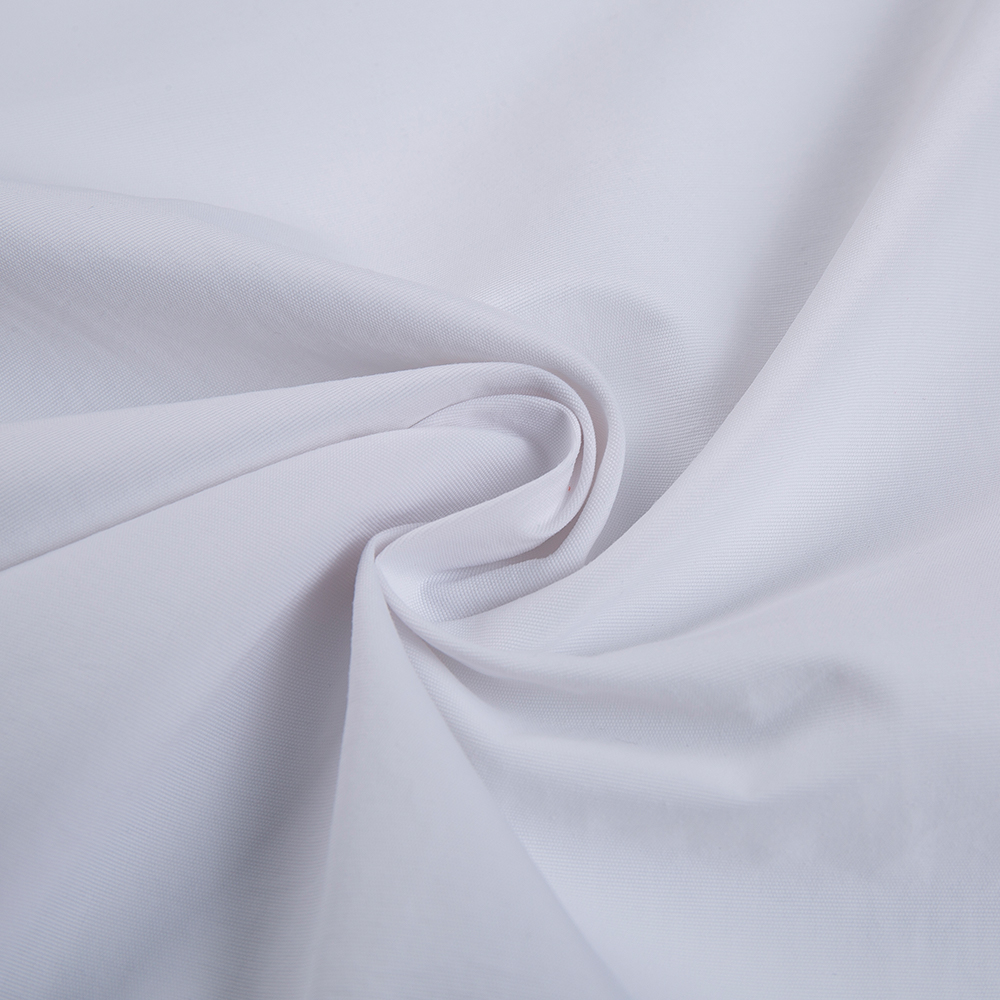Nylon Taslon fabric is generally known for its strength, durability, and water-resistant properties, but its elasticity and stretch properties can also play a significant role in determining its suitability for activewear and sports gear.
1. Comfort and Fit
How it affects activewear: In activewear, comfort is key, and fabrics with a degree of elasticity or stretch can provide a better fit, especially for items like leggings, sports bras, or fitted jackets. Nylon Taslon fabric typically has some inherent stretch, which allows for more freedom of movement without feeling restrictive.
Impact on performance: This flexibility helps activewear garments conform to the body, providing a more comfortable and supportive fit, which is particularly important for high-movement activities like running, yoga, or cycling.
2. Freedom of Movement
How it affects activewear: Stretch in fabrics allows for greater freedom of movement. When nylon Taslon is blended with spandex (Lycra) or elastane, the resulting fabric becomes more elastic and allows the wearer to perform dynamic actions such as squatting, stretching, or jumping.
Impact on performance: For sports gear and outdoor clothing, this is crucial. It ensures that garments like jackets, pants, and base layers do not restrict the wearer’s range of motion, especially in physically demanding activities like rock climbing, skiing, or outdoor hiking.
3. Shape Retention
How it affects activewear: Fabrics with good stretch properties can also maintain their shape after stretching, preventing sagging or deformation over time. Nylon Taslon, when used in activewear, tends to retain its shape and fit, which is essential for garments that undergo frequent movement and stretching.
Impact on performance: Shape retention helps maintain the garment’s structural integrity and ensures that the clothing remains snug and supportive even after repeated use, which is particularly valuable in sports gear.
4. Moisture Management
How it affects activewear: Some elasticity in nylon Taslon allows for better moisture-wicking properties by keeping the fabric close to the skin. As the fabric stretches and adapts to the body, it allows perspiration to move away from the body more effectively.
Impact on performance: This is especially useful in activewear, where keeping the body dry and cool is crucial. The stretch in nylon Taslon can help the fabric form a more efficient moisture-wicking layer that moves sweat to the surface, where it can evaporate more easily.
5. Durability in High-Impact Activities
How it affects sports gear: The stretchability of nylon Taslon also contributes to its durability under high-stress conditions. Sports gear and activewear, such as compression shorts, sports jackets, or cycling wear, experience significant wear and tear during intense activities, and fabrics with elastic properties are better able to withstand the stretching forces without breaking or losing form.
Impact on performance: Stretchy nylon Taslon resists wear from physical activity, such as stretching, bending, and pulling. This helps increase the lifespan of activewear and sports gear, even in demanding conditions.

6. Reduced Risk of Chafing
How it affects activewear: The stretchiness of nylon Taslon fabric ensures that the garment fits closely to the body without being tight or restrictive, which helps reduce friction. This is particularly important in activewear like running shorts, leggings, or workout tops, where rubbing can lead to chafing.
Impact on performance: A fabric that moves with the body reduces the potential for irritation or discomfort during prolonged periods of activity, improving the overall experience for athletes and outdoor enthusiasts.
7. Improved Aerodynamics and Performance
How it affects sports gear: For performance-oriented activewear, the elasticity of nylon Taslon helps create a close-fitting garment that reduces excess fabric, making it more aerodynamic. This is particularly important in competitive sports like cycling, running, or swimming, where minimizing air resistance is key.
Impact on performance: The form-fitting nature of elastic nylon Taslon fabrics helps reduce drag and friction, allowing for more efficient movement and performance.
8. Enhanced Breathability
How it affects activewear: Stretch fabrics, especially those with nylon blended with spandex or elastane, can also improve the overall breathability of the material. While nylon Taslon is naturally breathable, the addition of stretch fibers allows for a more customized fit, which can improve airflow to areas that need ventilation the most.
Impact on performance: Breathability in activewear is crucial for preventing overheating during intense activities, and the stretch properties of nylon Taslon ensure that the fabric stays close to the skin without hindering air circulation.
9. Compression Features
How it affects activewear: Some sportswear uses fabrics with controlled elasticity, like nylon Taslon blended with elastane, to create compression garments that offer muscle support during physical activity. These compression garments help improve circulation, reduce muscle fatigue, and enhance recovery.
Impact on performance: Compression wear made from nylon Taslon can enhance athletic performance by providing muscle support and reducing the risk of injury, making it ideal for high-intensity sports or endurance activities.











